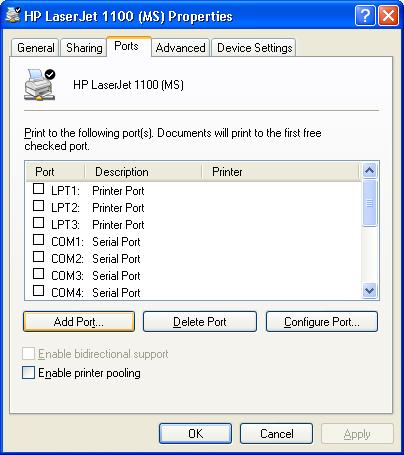|
Q:
How to setup a Standard TCP/IP Port to
print to Print Server?
|
|
|
|
|
|
Here is the procedure for the Standard TCP/IP printer port. Below procedure can be applied on Windows Vista, Windows XP, Windows 2003, and Windows 2000. 1.
Run the Print Server Configuration Utility to get the IP address of your
Print Server. If your Print Server Configuration looks like
the following, click
on PrintServer Status tab. Take a note about the Active IP address. If
your Print Server Configuration Utility looks like this, get the IP
address It
is optional to assign print server a fixed IP address in your network, but we
suggest you do so.
If you have no idea about IP address, you may click
here for
some basic knowledge for networking. 3. Under the command prompt, PING the IP address of your print server. In our example, ping 192.168.123.13 and receive 4 replies. Type Exit hit Enter to close the command prompt. 4. Click Start menu, go to Printers and Faxes. If you already have a printer driver icon existed, you can skip this step and go to step 5. Click on Add Printer icon, click Next. Select the option "Local printer attached to this printer" and remove the check on "Automatically detect and install my Plug and Play printer". Click Next.
Select the option "use the following port: LPT1". Click Next.
Select your printer driver provided by your Windows OS.
If you do not see your printer in the list, you can click "Have Disk" button and provide the driver or install the printer driver by your printer manufacturer. Click Next. You don't need to share the printer and don't print a test page. Click Finish button while the driver is installed successfully. Once you see the print driver icon created in Printers&Faxes group, you can continue to Step 5. 5. Right click on your
printer driver icon and select Properties. Go to Ports tab.
Click on Add Port. If your print server is a three ports print server, please modify the Port name as IP_192.168.123_p1 for the printer on port 1, IP_192.168.123_p2 for the printer on port 2, IP_192.168.123_p3 for the printer on port 3. 8. Select Custom. Click Setting. 9. Select Protocol: LPR. Input the Queue name:
lpt1. Please note, the queue name must be lower case of LPT1 for single port print
server. If you have multiple port print server and the printer is on
the second port, the queue name will be lpt2. If the printer is on
the third port, the queue name will be lpt3. 10. Click OK. Click Next. Click
Finish. Click Close. You will be back to the Ports tab. 11. Click on the General
tab and print a test page. Note, if you want to enable your Firewall, the LPR protocol uses TCP Port 515. You can follow the above procedure, then in the Exception of the firewall, add the TCP Port 515. That will make the printing go through your firewall.
|
|
